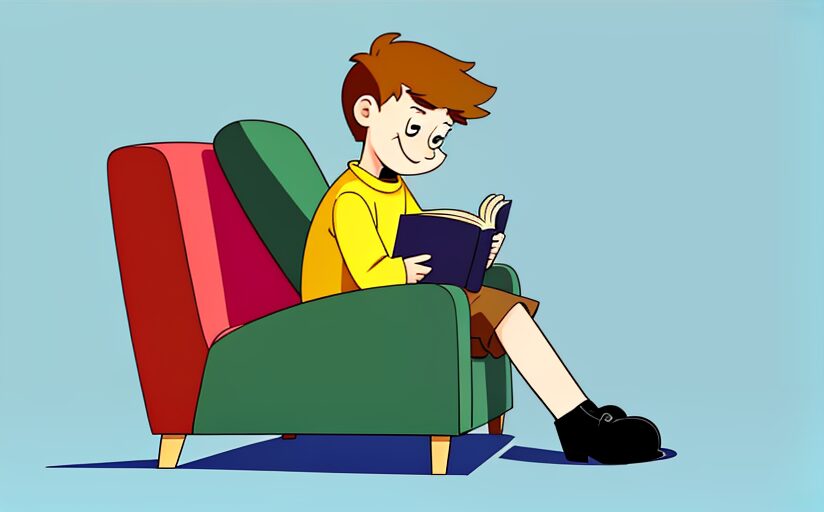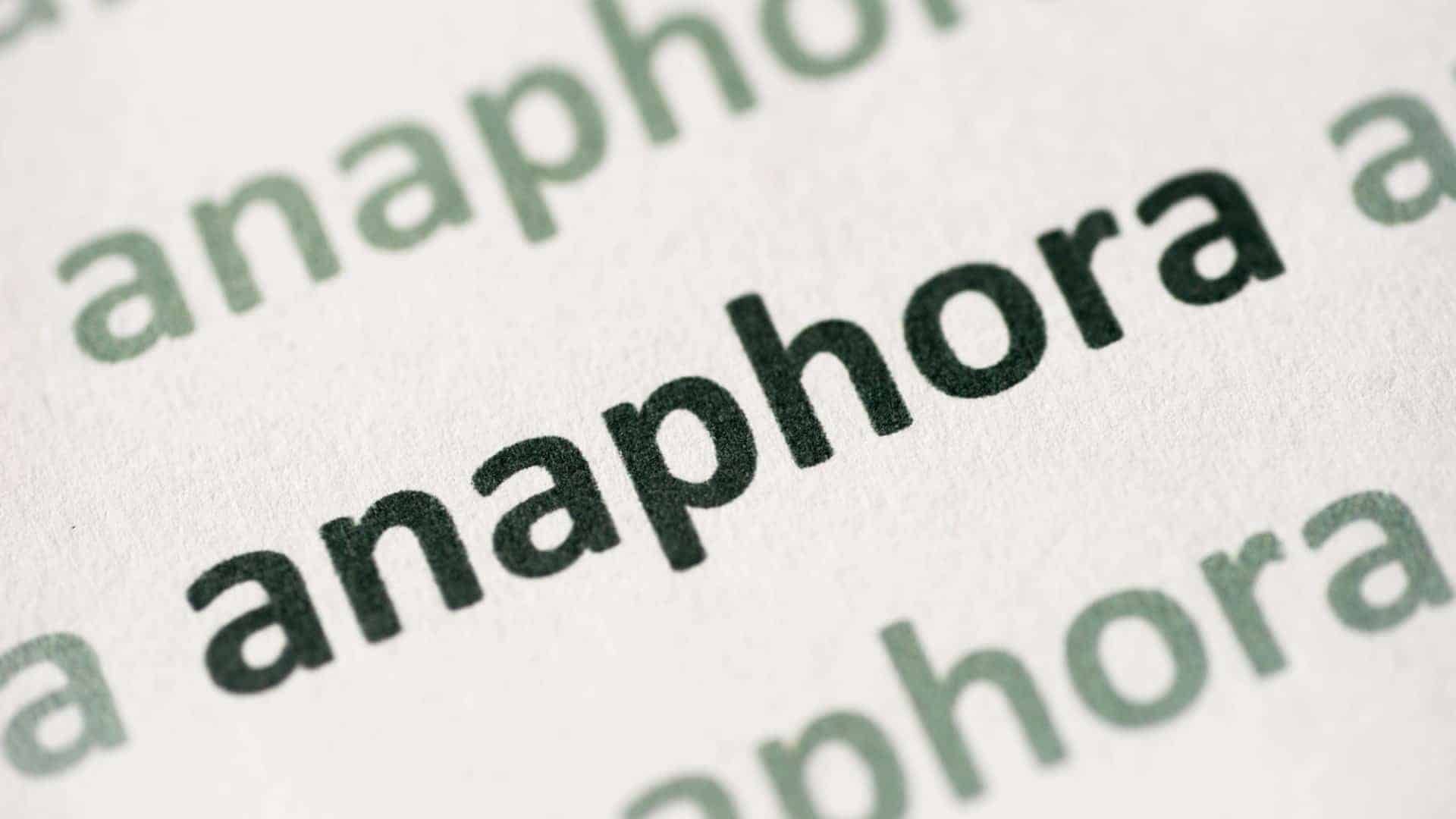If you read the classics (Charles Dickens, F. Scott Fitzgerald and Walt Whitman, just to name a few), you’ll no doubt run into anaphora. A powerful writing tool, it’s often taught in literature and creative writing classes, though it can also show up in more mundane media such as commercials and speeches. In fact, if you’ve listened to the radio today, you probably heard it used in at least one pop song.
So, what exactly is this elusive device, and should you incorporate it into your own writing? In answer to the second question: Yes, you absolutely should. And as to the first — let’s take a closer look at the history and definition of this device.
What Is Anaphora?
Anaphora (pronounced un-NA-fr-uh) is a literary device, also sometimes called a rhetorical device or figure of speech. What does that mean? It’s a specific technique used by writers to achieve a particular effect. For example, you’re probably familiar with alliteration, which is the repetition of sound at the beginning of words — “sliding down a slippery slope” is an example of alliteration.
Both literary devices are among many tools in writers’ toolboxes used to craft a compelling piece. By using them strategically, writers can strengthen their work and influence readers’ emotions.
What Is the Anaphora Definition?
Have you ever read a poem or paragraph that used the same phrase at the beginning of every line? Then you’ve seen anaphora in action. It’s relatively easy to put into practice — so easy, in fact, that you may have used it instinctually in speech or writing without even realizing it.

One thing to note is that, while all forms of this rhetorical device have repetition, not all repetition meets the anaphora literary definition. In order to count, the repetition must be at the beginning of one of these three grammatical units:
- Phrase
- Clause
- Sentence
Repetition that occurs in the middle or end of the unit is a different type of rhetorical device, though it’s not uncommon to see several devices used in the same sentence for a combined effect.
What Are Some Anaphora Examples?
Like most writing techniques, the best way to understand anaphora is to see it in action. To that end, let’s look at some basic anaphora examples:
- Every time the doorbell rings, every time my phone buzzes and every time I hear my name, I think it’s bad news.
- In the dark, in the cold, in the October night, the children went house to house, begging for candy.
- This time, things would be different. This time, she would stand up for herself. This time, she would prove she wasn’t a coward.
When Should You Use Anaphora?
Rhetorical devices can be used in any type of writing, but it’s important to place them thoughtfully. Repetition can be a powerful tool, or it can undermine your intent by making writing boring — the key is to use it to highlight words or phrases that you deem important.
How you use anaphora depends on the type of writing you’re working on. Some literary forms are better suited for repetition than others; for example, repetition is quite common in poetry and song lyrics, but it can become cumbersome in prose. To explore the best use of anaphora, let’s look at several popular genres.
Verse
Both poetry and songs rely on rhythm. Fortunately, repetition is a great tool for creating rhythm:
She said she’d never love again,
She said she’d die alone.
She said she’d wait forever
For her lover to come home.
Even verse that doesn’t rhyme has its own rhythm:
Away across the meadows
the wind carried the dandelion seeds
Away across the ocean
the breeze carried the scent of salt
Away across the city
the gusts carried the choking smoke
But never once did they carry word of where you’d gone.
Fiction
You can also find anaphora in a variety of fiction:
- Flash fiction
- Short stories
- Novellas
- Novels
When using this rhetorical device in your own creative writing, keep in mind that having varied sentence structure is integral to flow, so starting with the same word or phrase is sure to stand out. This isn’t good or bad in and of itself — the words you choose to repeat will determine whether your attempt comes off as a genius writing strategy or an awkward and unimaginative attempt at genius.
For example, here’s a poorly executed attempt at anaphora:
- I went home to get some sleep. I went to work to earn some money. I went to the bar to blow off steam.
The repetition of “I went” makes it seem like there’s something important about the act of going somewhere, but that doesn’t pay off in the example. Here’s a more effective use of this rhetorical device:
- I went home thinking she would be there, but the house was empty. I went to work hoping to lose myself in the grind, but I couldn’t focus. I went to our favorite bar, praying to see her familiar form among the crowd, but all I saw were strangers.
In the above example, the narrator is going to different locations with purpose, but is thwarted. The emphasis anaphora places on movement may also imply that the narrator isn’t necessarily going to a certain location as much as he or she is running from emotional turmoil.

Public Speaking
Finally, anaphora is often used in political speeches and other forms of public speaking. Here’s a good example:
- Now is the time for change. Now is the time to rise up and make good on the promise we, as citizens, have made to each other and future generations. Now is the time to find our courage, raise our banners and sound the horn of victory.
What Effect Does Anaphora Create in Writing?
Now that we’ve looked at anaphora examples, let’s talk about how this rhetorical device actually functions in writing. Primarily, it creates emphasis on certain words. What that emphasis accomplishes depends on the writer’s intent and use of other literary techniques.
Creating Structure
Having the same word at the beginning of a phrase, clause or sentence can create structure. This type of organization can be especially helpful if you’re writing a long sentence or paragraph, as it can prevent readers from losing their place or growing overwhelmed.
Evoking Strong Emotions
Repetition is one of many tricks that can elicit strong emotion. The natural rhythm created by anaphora allows writers to build intensity as the piece progresses, connecting an early neutral idea to a deeply emotional one later on. This is one reason we see this rhetorical device so often in political speeches.
Making Phrases More Memorable
The more you hear a phrase, the more likely you are to remember it. Anaphora takes advantage of this fact to drive home important ideas and leave them lingering long after we read a poem or hear a speech.
What’s your favorite example of anaphora?


Leave a Reply